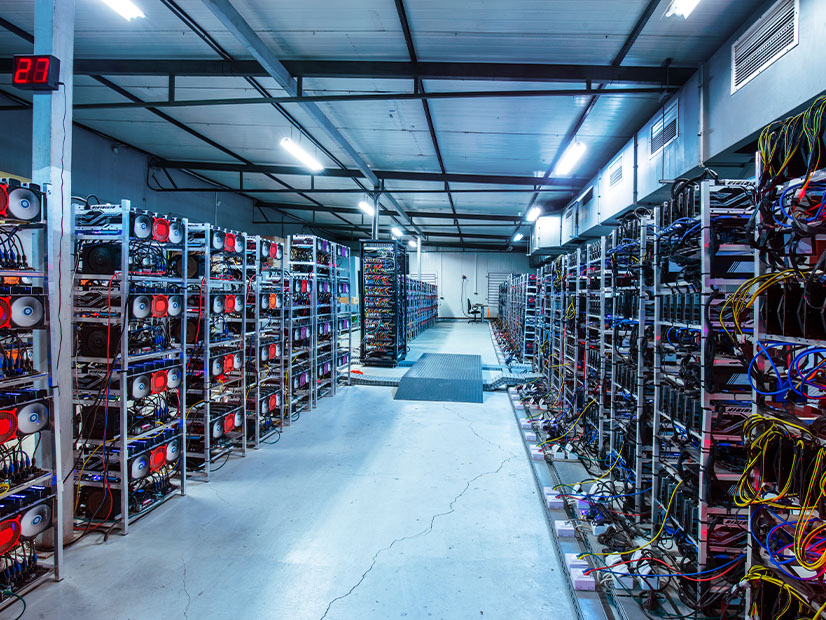Sierra Club released a report Sept. 18 arguing that utilities can meet rising demand with clean resources, but to ensure that happens, the big customers driving much of that growth need to stick to their clean energy commitments.
Forecasts of rapid demand growth driven by data centers, electrification and manufacturing have garnered headlines, with merit, says the report, “Demanding Better: How growing demand for electricity can drive a cleaner grid.”
“Electric utilities across the country, from Virginia to Arizona, have quickly responded by proposing to expand gas-fired generation and retain existing coal-fired power plants, leaving policymakers deeply concerned that actual and projected progress [toward] ambitious climate targets is now at risk,” the report says. “Ironically, the largest drivers of demand are corporate customers with climate commitments, many of whom want to see a different pathway forward.”
Dominion Energy is forecasting huge demand growth for its Virginia utility largely because of data centers, and it has argued that it will need new natural gas units to help meet it. (See Dominion CEO Says Virginia Well Poised to Meet Growing Demand.)
The paper suggests that large customers assess their host utilities’ decarbonization plans and actively engage in utility proceedings to demand a transition to clean energy. It argues that utilities should move past annual volumetric renewable purchases to pursue 24/7 clean energy, while regulators should require that new large customers be transparent about their load projections. Large buyers should consider partnering with utilities to permanently buy down emissions.
Policymakers should work to create a national system for tracking and verifying hourly emissions to facilitate time-based renewable energy credit markets.
Dominion is not alone in arguing for new natural gas to meet rising demand, with the paper noting Georgia Power, American Electric Power, Duke Energy, Tennessee Valley Authority, Arizona Public Service and others.
“Electric utilities, apparently caught off guard at this need to provide reliable electricity to a vastly expanded customer base, have defaulted to familiar but high-emissions choices: building turnkey gas power plants and delaying the retirement and replacement of aging coal plants,” the paper says.
While the decisions were made quickly in response to demand going up for the first time in decades, they could have long-lasting impacts, as new gas plants will have to operate for decades to recover their costs.
Part of the increase in demand is to address climate change, as electricity offers a ready alternative for heating buildings, fueling transportation and decarbonizing some industry. That, combined with growth in data centers and utilities’ obligation to serve customers, has led to more natural gas plants being planned and coal retirements being delayed around the country.
One issue hanging over demand growth is that long-term forecasts vary wildly, from artificial intelligence representing 8 to 9% of overall electric demand by 2030 to plateauing well before then.
“Individual utilities may only have limited insight into their own future,” the report says. “Some observers have hypothesized that large load customers may be shopping the same demand to multiple utilities, looking for the fastest interconnection process at the lowest cost, a practice which puts utilities at risk of overbuilding for loads that may not materialize.”
Many data centers are built by companies whose business is to build that infrastructure for third parties in anticipation of future demand that might not materialize. The sector also faces competitive pressure to increase the efficiency of data centers through improved chips, cooling, load management and more efficient algorithms in software.
Perfect foresight is impossible, but utility planning practices can minimize risk while firms building data centers should be transparent about where they are planning new facilities.
Many of the firms building demand centers have their own goals to decarbonize, but the report notes that traditional renewable energy procurement might not be enough to decarbonize, as historically they have bought renewables far away from load.
“At the extreme, if a buyer signs a contract with an existing producer, it may offer little or no price signal to incent new clean energy that displaces the need for emitting fossil plants,” the report says.
Large buyers can get around that issue by reorienting toward hourly tracking to ensure that their energy requirements are being met by local, time-matched clean energy.
That opportunity is available in some states, but in those that do not offer any kind of retail markets, the paper suggests engaging in utility regulatory proceedings to ensure the firm serving large customers is as clean as possible. Large buyers should also support mandatory renewable or clean energy standards that drive the entire fleet to net zero, the paper says.




